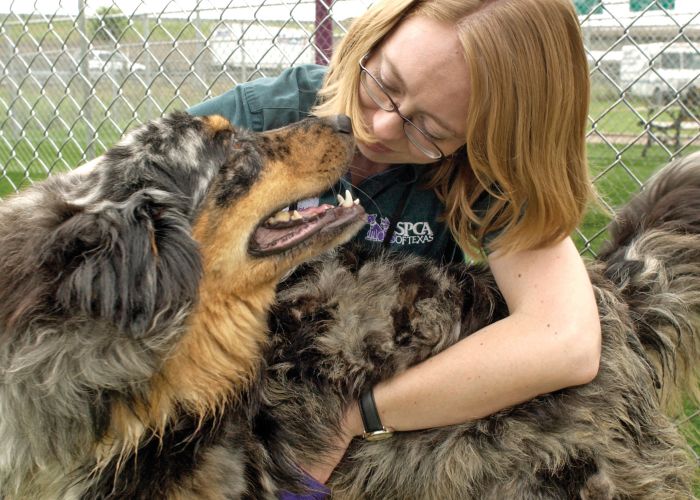A place to call home
Shelters and other animal welfare groups prepare for looming eviction crisis
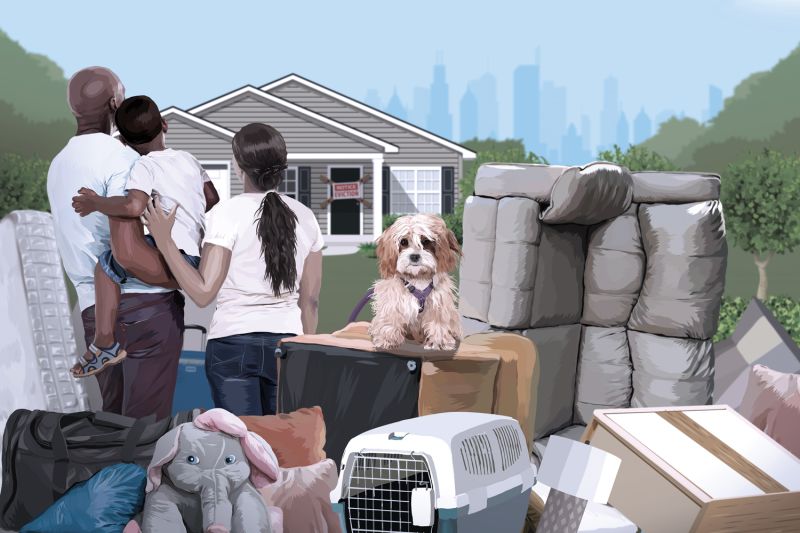
Things were looking good for Earlene in Atlanta at the start of 2020. She had a job at Macy’s. She was renting a house with enough space for her teenage son and daughter and their three dogs, while saving to buy a place of their own.
Then, in March, COVID-19 struck. Earlene lost her job. Her landlord told her she had to buy their rental or move out within 60 days because he couldn’t afford the property taxes. Soon she was putting stuff in storage and wondering what to do about her dogs: a Yorkie named Sage, a Lab-pit bull mix named Pearlie and a boxer named Falcon. It’s tough to find housing that accepts dogs, especially big ones. Rents were high. She considered sleeping in her car.
“Hard times, that’s putting it lightly,” Earlene says. “People are gouging you. They know you’re desperate.”
A nonprofit called Paws Between Homes came to the rescue, arranging for Sage and Pearlie to go to fosters and Falcon, more rambunctious, to go to a kennel for 90 days. While Earlene and her children stayed with relatives, then at a hotel, Cole Thaler—a housing attorney and founder of Paws Between Homes—brought Pearlie and Sage for visits and helped search for dog-friendly rentals.
Finally, Earlene found a four-bedroom home outside Atlanta. Paws Between Homes paid the $400 pet deposit. In October, her family—including the dogs—moved in.
During the coming months, millions of people with pets will face circumstances similar to Earlene’s as federal, state and local pandemic eviction moratoriums expire and unemployment and rental assistance are exhausted. A tsunami of evictions is expected to hit in January after the Centers for Disease Control and Prevention eviction moratorium expires and back rent and late fees come due.
With more than two-thirds of renters owning pets, the number of animals displaced with their people could be catastrophic, says Amanda Arrington, senior director of Humane World for Animals Pets for Life program, which provides support services to pet owners in 50 underserved communities across the country, directly and through local partners. Shelters and other animal welfare groups need to be ready to offer services that will keep families intact.
“If we want to keep pets in their homes, we have to keep people in their homes,” Arrington says. “We have to be creative. We have to be deliberate to fill that gap.”
72% of renters own pets.
Tools for support
Michael Keiley, director of adoption centers and programs for the Massachusetts SPCA-Angell Animal Medical Center in Boston, remembers what happened in 2008 and 2009 during the Great Recession. Pets flooded shelters.
“It was a flip of the switch, and we were over our heads in animals. I recall feeling just a state of desperation. It was really hard to support people in any way other than surrender.”
A decade later, the growth in pet-owner support programs like Pets for Life means the animal welfare field is better able to keep animals with their families. The MSPCA, a Pets for Life partner, now offers Safe Pet, a program that provides two weeks of boarding for pet owners who have lost their homes, with the possibility of a three-month foster care extension. Still, with many organizations facing budget shortfalls, and with an unprecedented number of evictions expected this winter, existing programs may not be enough.
In September, the HSUS hosted a webinar on the eviction crisis for the animal welfare community and published an online toolkit to help groups support pet owners facing eviction, fund new or expanded services, and raise public awareness of the problem.
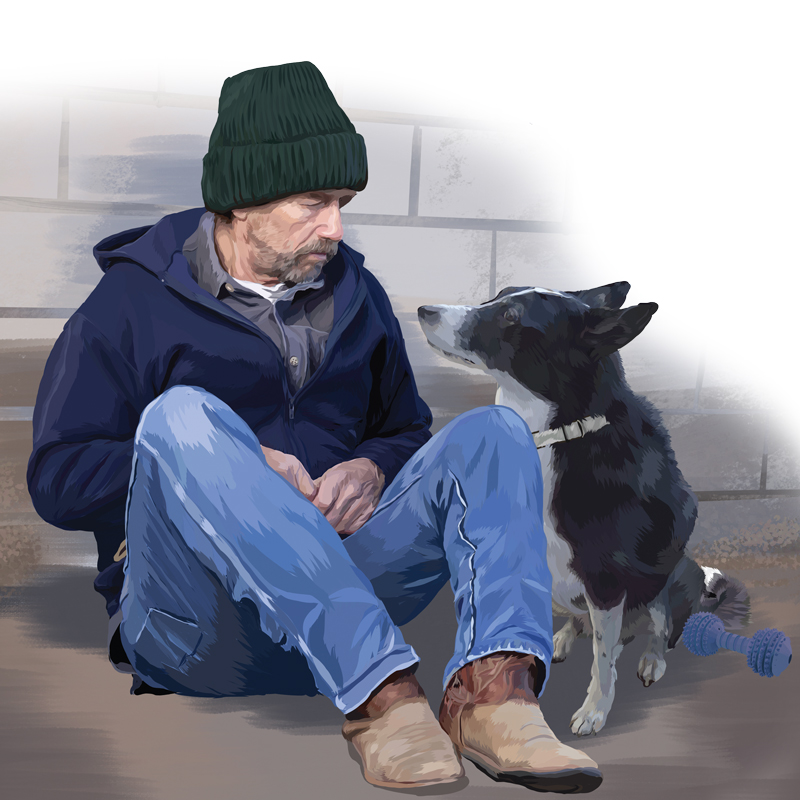
Interventions to keep people and their pets together can include arranging short-term foster care, paying pet fees so renters can afford leases, and providing supplies and veterinary care. Even if an organization can’t afford those strategies, it can still connect renters with legal help, temporary and long-term housing that accepts pets, and human services agencies.
Simply informing pet owners that an order to vacate doesn’t mean they have to move out right away can be crucial, Keiley says. “Many times we receive requests for assistance at the last hour. We want them to know, if animals are involved, reach out to us at the earliest point.”
Often people don’t understand their rights as tenants, and the current mix of local, state and federal eviction laws and moratoriums adds to the confusion. Families with pets trying to stay in their homes should know they can’t be evicted overnight, says Abby Volin, a former HSUS policy specialist and attorney who founded Opening Doors to help pet owners in landlord-tenant disputes. “Eviction is a complex legal process, and each state (and some municipalities) has its own eviction law, which includes the various protocols, the time frames between each step, available defenses and protections. Tenants must be notified every step of the way and be given a chance to tell their side of the story in court.”
If they qualify for protection under the CDC eviction moratorium, which at press time was set to end Dec. 31, renters should carefully fill out the required form and submit it to their landlord immediately. They should watch for illegal tactics such as landlords failing to make repairs, cutting off utilities, or removing tenants’ belongings and changing the locks. Unfortunately, moratoriums on evictions for unpaid rent don’t protect against evictions for violations of lease agreements, and they don’t reduce the financial pressure on landlords who need rent money to pay their mortgages.
“If we want to keep pets in their homes, we have to keep people in their homes. We have to be creative. We have to be deliberate to fill that gap.”
—Amanda Arrington, Humane World for Animals
“Landlords are feeling emboldened,” Volin says. “Even the courts, they’ll challenge the [tenant’s moratorium] declarations, they’ll push back.”
With evictions being filed and processed in some cities, the crisis is already visible in parts of the country.
During August, several weeks after an earlier federal eviction moratorium expired, Paula Shaw, coordinator of Companion Animal Alliance, a Pets for Life partner in Baton Rouge, Louisiana, started noticing that at least two houses on every block in the neighborhood she serves had piles of belongings out front. She stopped to look and saw empty doghouses and crates and pet food bags left behind by families forced out. Her clients with pets who lived in those homes were gone.
Shaw watched as other tenants in the community struggled to stay with their pets. “You see how much people love their animals, the priorities people make their animals,” she says.
Shaw learned of an elderly woman who was at the point of giving up two Chihuahuas because her husband had COVID-19 and she couldn’t stop the dogs from going into his room. Shaw brought kennels, beds, toys and a baby gate so the woman could keep the dogs near the front door, and she dropped off flea medicine and pet food.
While handing out supplies at a local food bank, Shaw met Darlene, a woman who lost her restaurant job because of the pandemic and then was evicted. Shaw gave Darlene more than a dozen bags of food for her two dogs and five cats. Then, as Darlene searched for employment and a new home, Shaw supplied everything required—including sterilizations and vaccinations—for the dogs and cats, as well as a parakeet, two ducks and two chickens, locating a farm where the ducks and chickens could live temporarily while Darlene stayed with her ex-husband. After Darlene got a new job and rented a house with a yard, Shaw paid the $400 deposit so Darlene and her grandson and all their pets could move in.
“Everybody is together, thanks to Pets for Life,” says Darlene, who happily slept on the floor with her grandson during the first few days, until Shaw delivered two beds. “These are my babies. They gotta come with me. If they can’t come, I don’t go.”
“I just keep thinking, ‘I helped this family keep a roof over their heads, I helped this animal.’”
—Cole Thaler, Paws Between Homes
Partners in crisis
Most animal welfare organizations don’t have the capacity to take on evictions in their communities alone, but they can do it through partnerships.
In Atlanta, as evictions are rising, LifeLine Animal Project is providing temporary housing for animals; supplying community support like food, leashes and collars, litter and veterinary care; and sending referrals to Paws Between Homes, an all-volunteer nonprofit that launched in January to provide short-term foster care for the pets of people facing eviction.
“We had no idea what was two months away,” Thaler says, referring to the pandemic. “We’ve had to grow very quickly.” By October, Paws Between Homes had returned 23 pets to their owners and was trying to recruit more fosters and raise more money to be ready for what’s to come.
“You can’t step back and contemplate the scope of the problem—the number of people living in poverty, the number of homeless animals—it’s completely paralyzing,” says Thaler, an attorney with the Atlanta Volunteer Lawyers Foundation. “I just keep thinking, ‘I helped this family keep a roof over their heads, I helped this animal.’ That’s how change gets made.”
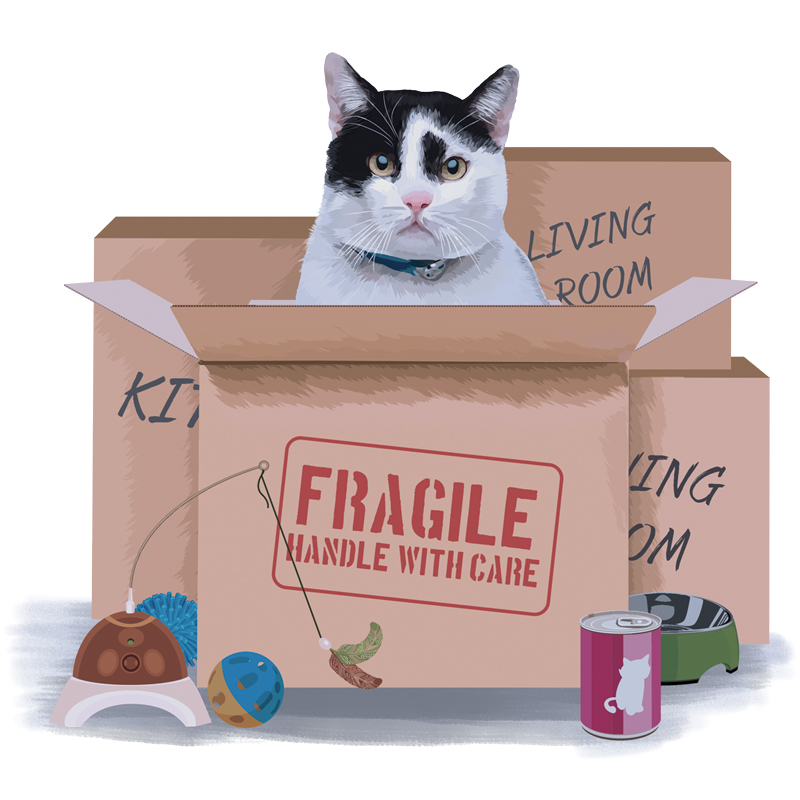
In North Nashville, the Pet Community Center has been paying pet fees and deposits for tenants for years to help pet owners survive rapid gentrification—landlords turning rentals into condos, developers tearing down affordable housing, higher rents and property taxes—says president and CEO Natalie Corwin. The center is working with other nonprofits to build a safety net. A new short-term foster group called Pawster Nashville began taking animals this year. Nashville’s Metro Animal Care and Control is using the Foster Dogs Inc. network to keep pets out of the municipal shelter, and providing whatever is necessary, including training to resolve behavioral issues, so that they can stay in their homes, says manager Lauren Bluestone.
Sheila moved from a trailer park rental in Nashville to a townhouse in the city that offered lower rent. She knew she would have to pay a $500 pet deposit for her two dogs—$250 each—but was surprised several months later when she found out she would also have to pay an additional $1,000 in pet deposits for her four cats—the equivalent of a month’s rent.
The Pet Community Center stepped in, paying half the deposit and negotiating a deal for Sheila, who lives on a fixed income, to pay off the balance in $100 monthly installments. The nonprofit also addressed the concerns of neighbors who had been complaining to Sheila’s landlord about her cats. They bought one a cover to protect his vehicle from paw prints, and another, who is scared of cats, a motion-activated noise and light deterrent to keep them off her porch.
“If they hadn’t helped me, I don’t know what I would have done,” Sheila says.
Up to 40 million people in 17 million households are at risk of eviction.
Influencing the big picture
Animal welfare groups have been focusing on affordable care for pets, but with the eviction crisis looming, they also need to start focusing on housing affordability and security, Arrington says. “If animal welfare mobilized around these issues, I believe we would see significant shifts.” Much depends on the willingness of the housing industry to waive or eliminate pet fees and breed and size restrictions.
This may feel like new territory for many animal advocates, but because of their experience with vulnerable communities, shelter directors have powerful stories they can use to persuade legislators to make it possible for people to stay in their homes, says Lauren Loney, HSUS Texas state director and a former housing advocate.
And as more animal nonprofits turn their attention to the human part of the “keeping families together” equation, human services nonprofits are also stepping up for animals. Families hang in the balance.
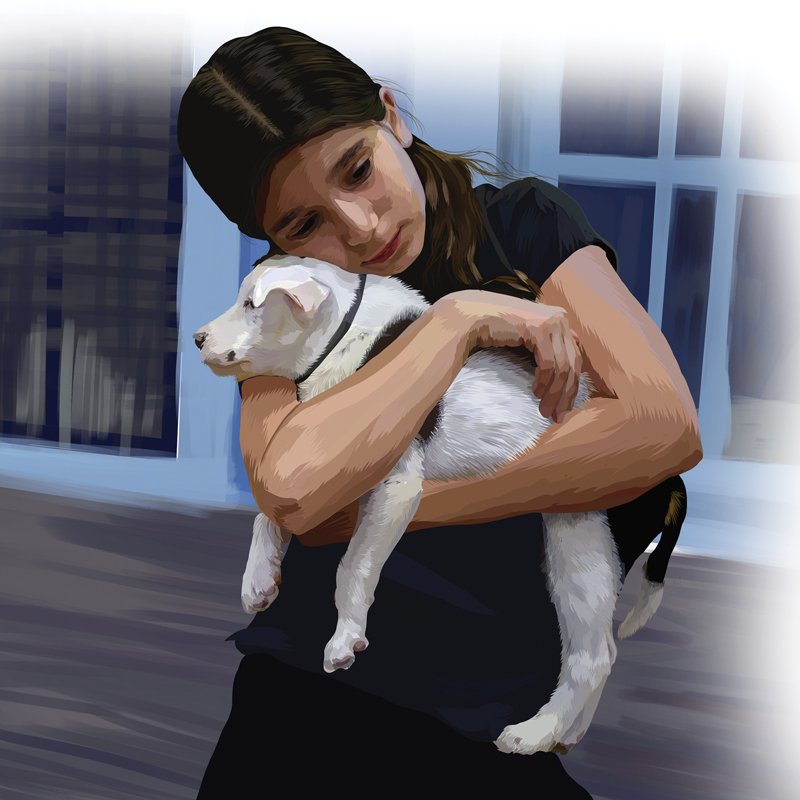
The Interfaith Hospitality Network of Greater Cincinnati is a homeless shelter originally set up to serve only people. But over the last decade, IHN came to realize that it couldn’t serve people without serving their pets, says pet program coordinator Garrett Parsons.
At first, the shelter kept residents’ pets in staff offices. Then IHN got a grant from PetSmart Charities to build a kennel that could temporarily house people’s pets while they searched for housing. Now, the homeless shelter is part of a citywide coalition called Saving Animals From Eviction. More money from PetSmart is allowing IHN to double the capacity of the kennel and cover the cost of rental deposits, veterinary care and food for clients during the pandemic.
When Michelle, a disabled Army veteran suffering from post-traumatic stress disorder, suddenly lost her housing last summer, she had to stay at a shelter in Cincinnati. She couldn’t bring her two therapy dogs, a Chihuahua named Apple Butters and a Chihuahua mix named Cadillac Seville, because they weren’t officially certified as service animals, so IHN found a family to foster the dogs.
Even knowing her dogs were well cared for, it was hard for Michelle. Each morning she had to get up at 6 a.m. to take medication that put her back to sleep. Her room was tiny. The only TV was in the lounge. Male residents harassed her. She cried. She grew depressed. But every week, Michelle got pictures of her dogs. And every day she focused on the time when they would be together again.
“That’s what kept me going, those little faces,” Michelle says. In September, she moved into an apartment and got her dogs back. The dogs have their own beds, but they lie on Michelle’s. And she lets them.
* Some last names have been withheld for privacy reasons.
Editor’s Note: In late December, Congress approved a stimulus deal that extends the federal evictions moratorium until January 31 and provides $25 billion in rental assistance. On Jan. 20, the new director of the Centers for Disease Control and Prevention extended the moratorium until at least March 31.
Document






